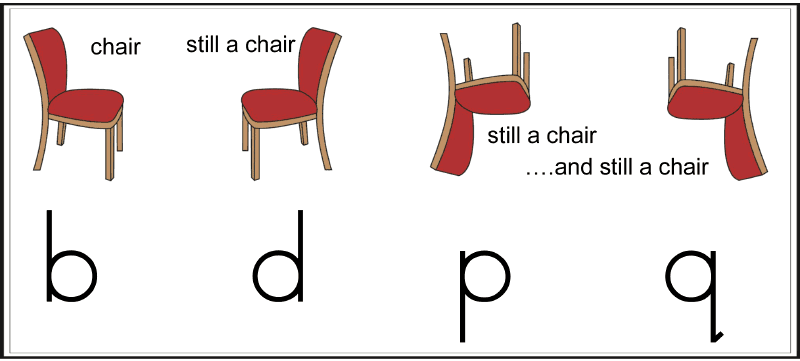A question parents ask us quite frequently at I Can Read information sessions is “why do children confuse certain letters and how can it be helped?” As specialists, we know that many children in this age category reverse their letters and even C-V-C words sometimes. Thankfully, you’ll be pleased to hear it’s not necessarily a sign that a child is dyslexic or has other learning difficulties. In fact it is totally normal for this age group.
Letter confusion or reversals of tricky letters like “b” and “d” are common in early childhood. About a third of the students we encounter confuse “b” and “d” when reading. Thankfully there are plenty of ways to help children learn how to differentiate between the two.

Before we give you helpful tips on how to tackle the problem, it’s worth taking the time to explain the reason it happens. The difficulty is linked to the way our brains interpret visual signals. Our brains are supposed to view similar shapes as potentially representing the same underlying item. Basically our brains want to believe that the letters ‘b’ and ‘d’ are two shapes that represent the same thing – or letter. In our minds, the letter ‘d’ is like the letter ‘b’ from a different angle making it difficult to process. The two are exactly the same shape – just reversed. This is a difficult concept for a beginning reader to grasp.

So how can we help children correctly identify the letters ‘b’ and ‘d’? I Can Read are at hand with some tried and tested simple tricks. Just find the one that suits your little reader the best.
- You can ask your child to imagine the shape of the word “bed” as an actual bed. With “b” at the beginning and of course “”d” at the end. Visual tricks are usually very successful with the little ones.
- Another easy trick is to point out that small ‘b’ fits inside big ‘B’, but small ‘d’ doesn’t fit inside big ‘D’. Awareness is key!
- Another tool that children will always have access to when reading or writing is to get them to hold up their thumbs, ask them to notice that the left hand looks like the letter ‘b” and your right hand looks like the letter “d”. Since we read from left to right, and since the letter ‘b’ comes before the letter ‘d’. It’s also worth noting that the same trick works for ‘p’ and ‘q’ if you hold your thumbs pointing down.
- The letter “b” starts as a straight line which is also how you hold your mouth when starting to say the sound. Using a mirror while saying the sounds aloud can help young children see the difference between the two sounds.
- Finally, we recommend, as we do at I Can Read, teaching the two letters at different times in a bid to help young children differentiate between them.
We hope these tips help but the real key to overcoming the confusion between letters is, of course practice! As children become more familiar with letter shapes, the less they will need to think about it and a certain point, it will become second nature. So try out our tips and good luck!


